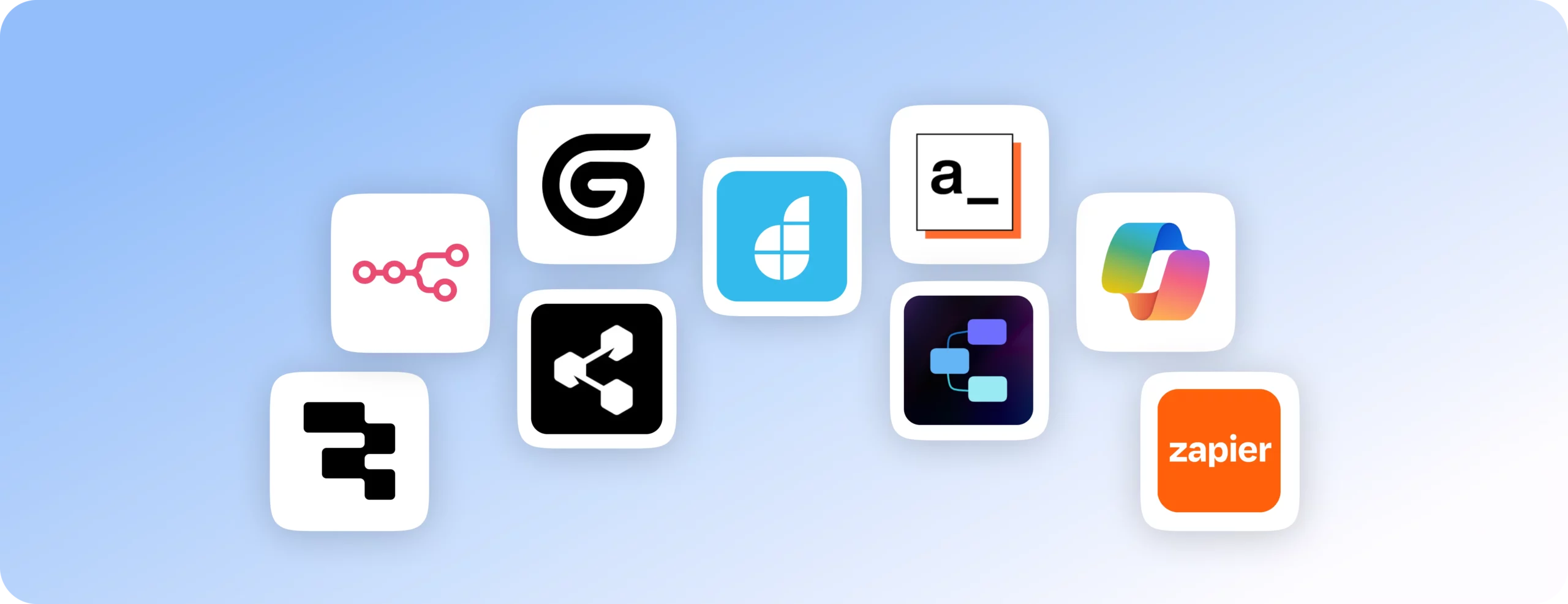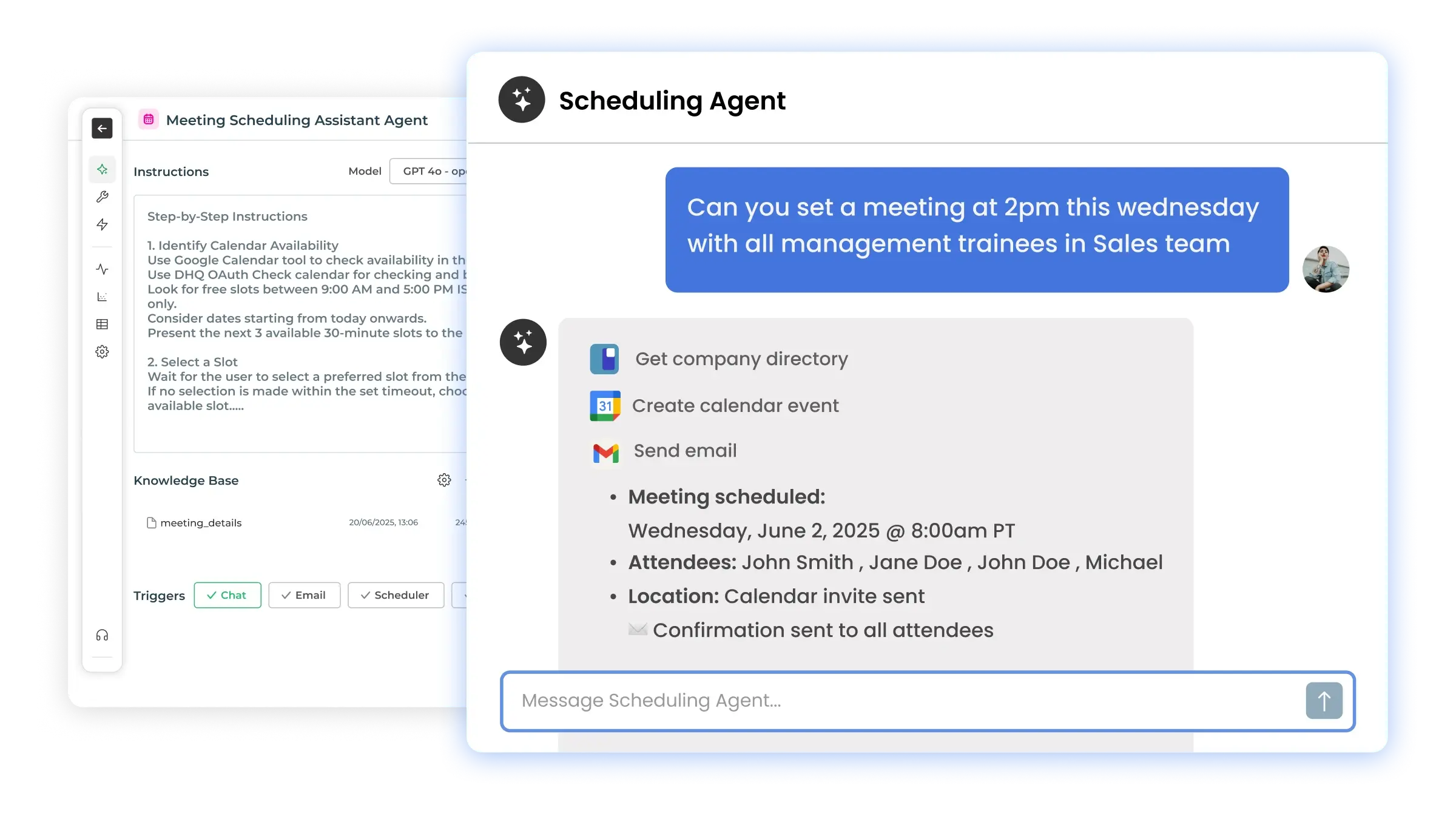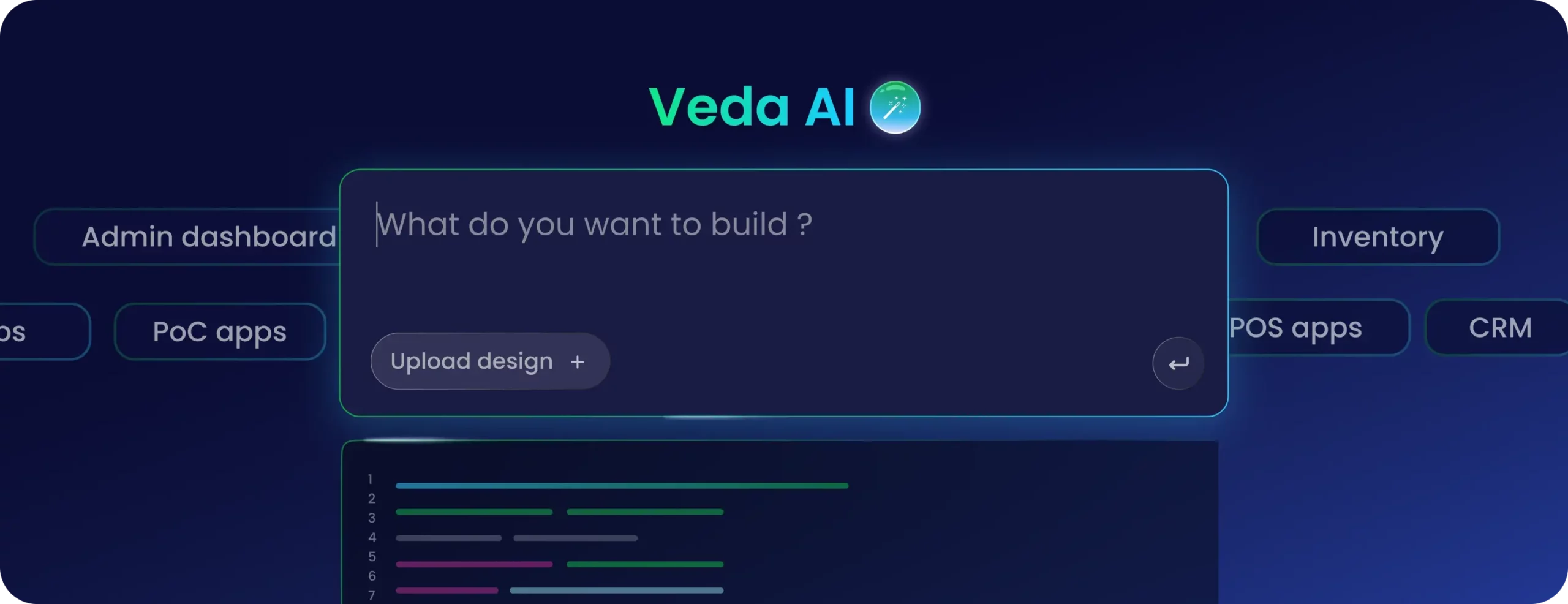

Best low-code AI agent builders
By now, we’ve all used LLMs like GPT-4 or Claude to accelerate coding, write documentation, or explain complex concepts. But those are still one-off prompts. You ask, it answers. That’s it.
AI agents go a step further. They can take actions, follow logic, call APIs, and complete tasks end-to-end. Instead of just helping you think, they can do the work beyond the chatbox.
We have talked at length about what an AI agent is. In this post, we’re examining tools that simplify the process of building these agents, eliminating the need to stitch together scripts or manage infrastructure from scratch. In this post, I’ve rounded up the current most useful low-code AI agent builders for teams who want to build, test, and run reliable AI agents fast.
What is an AI agent
AI agents are smart software programs that can work on their own or with minimal help. They can look at information, make plans, and carry out tasks by themselves, all while following the rules set by a business. These agents are part of a new wave of AI tools built to act with purpose, achieve specific goals, and adjust their approach as they learn. Over time, they get better at what they do, helping teams work more efficiently and produce higher-quality results.
With the ability to learn and improve over time, AI agents help modernise outdated systems and drive growth, making them a powerful tool for both small and large organisations aiming to stay competitive.
Real-life AI agent use cases
It is much easier to understand AI agents and also differentiate them from standard automations with the following examples:
- Customer Support Automation: AI agents can handle customer inquiries end-to-end, resolve common issues, and escalate complex cases to human agents, reducing wait times and support costs.
- Real-Time Fraud Detection: In banking, AI agents monitor transactions, flag suspicious activity instantly, and initiate investigations with minimal human input, enhancing security and compliance.
- Healthcare Workflow Management: Agents can manage patient appointments, documentation, and ensure adherence to medical protocols, freeing up staff for critical care tasks.
- Autonomous Financial Trading: AI agents analyse market trends in real-time and execute trades based on pre-set strategies, improving speed and decision-making accuracy.
- AI Developer Assistants: Agents like GitHub Copilot help developers by generating, testing, and debugging code, accelerating software development cycles.
Did You Know?
In April 2025, a survey found that 96% of enterprise IT leaders plan to expand their use of AI agents over the next 12 months, citing roles in development support, security, and performance optimisation. It shows where the future of productive, tool-powered workflows is headed. Source
AI agent Builder
An AI agent builder is a tool or platform that helps users create, train, and deploy AI agents. These AI agent builders often come with easy-to-use interfaces and ready-made templates, making it simpler to build AI-powered applications and start using them in your day-to-day operations.
What is a Low-code AI agent builder?
A low-code AI agent builder differs from traditional AI agent builders. These tools minimize the need for traditional programming by offering more accessible ways to define how an agent works. This could be through visual interfaces like drag-and-drop builders, flowchart-style editors, or even simple prompt-based UIs where you describe what the agent should do in natural language.
What sets low-code platforms apart is their heavy use of pre-built, reusable components, like triggers, actions, and integrations, that users can configure instead of creating from scratch. This makes them ideal for those who don’t have the time, resources, or deep technical skills required to build agent systems the traditional way.
Depending on the platform, you might still be able to, or need to, write some code for advanced customizations, especially if it’s built with developers in mind. But regardless of how technical the end user is, the overall goal remains the same: to make it faster and easier to build powerful agent-based workflows that automate tasks, assist with decision-making, or even replace parts of human interaction.
In this blog, we will be looking at the current best Low-code AI agent builders.
1. DronaHQ low-code AI agent builder
DronaHQ includes an agent builder designed for enterprise operations where agents need to do real work, not just run as isolated chat experiments. It lets teams define an agent’s goal, tools, and context, and then choose how that agent is triggered or invoked. This removes the usual split where the logic lives in one tool and the interaction surface has to be built separately.
The platform supports a standard chat interface and multiple trigger surfaces, so you can have agents can run through chat, email, webhooks, schedules, or workflow actions. Developers can combine reasoning steps with tool use, data access, and code when needed, making it suited for tasks that mix intelligence with operational execution.
Key features
- Intuitive no-code agent builder interface
- Define intructions in simple natural language
- Goal and tool-driven agent setup for operational tasks
- Standard chat interface for agent interaction
- Multiple triggers, including email, webhook, schedule, and in-workflow actions
- Tool access for APIs, databases, and internal systems (via MCP servers)
- Mixed logic combining agent reasoning with JavaScript, Python, and workflow steps
- Optional knowledge bases for grounded reference
What it focuses on
- Agents that resolve or streamline daily operational pain points
- Use cases that blend reasoning with structured actions
- Situations where teams want both the logic and the invocation layer in one place
Current applications
- SQL agents for reporting and data lookups
- Document understanding and verification flows
- Internal support and ITSM assistants
- Multi-step ops workflows that require reasoning plus execution
2. Botpress
Botpress is an open-source conversational AI platform that now includes Autonomous Nodes, blocks that turn chat flows into fully fledged AI agents. Teams define an agent’s goal and personality in plain language, then mix structured dialogs with LLM reasoning, 120-plus integrations, and usage-based cloud hosting to deploy support bots or workflow helpers fast.
Key features
- Autonomous Nodes for Goal-Driven Agents
- Visual drag-and-drop flow builder
- 100 + channel & API connectors
- Open-source core with scalable cloud hosting
What It Misses:
- Requires solid prompt engineering for stability
- Autonomous behavior may unpredictably alter flows without clear logs
- Potential instability during model upgrades
Current Applications:
- Customer support bots with dynamic context switching
- Lead‑gen assistants that integrate with CRMs
- Internal support workflows with multi-channel deployment
3. Gumloop
Gumloop is a no-code AI automation framework that lets you design agentic workflows with ready-made components and custom nodes. Drag blocks for data extraction, scoring, or notifications, trigger flows via email, Slack, or webhooks, and monitor runs in a unified dashboard, ideal for operations teams that need hands-free, end-to-end automation.
Key features
- Library of pre-built AI components
- LLM-powered custom node designer
- Hands-free triggers (email, Slack, webhooks)
- Real-time monitoring & error handling
What It Misses:
- Still evolving community ecosystem
- May not support highly customized logic
Current Applications:
- SDR & lead‑scoring automation
- Document processing, SEO monitoring, and CRM updates.
4. Flowwise AI
FlowiseAI is an open-source visual builder for LLM workflows and autonomous agents. Its node-based canvas puts LangChain concepts, tools, memory, and retrieval into drag-and-drop blocks, so developers iterate quickly without heavy Python. Self-host with a single npm start or use the managed cloud for autoscaling endpoints, perfect for startups prototyping agent systems.
Key features
- Node canvas for LangChain agents
- Built-in RAG & vector-store modules
- One-command self-host or managed cloud
- Extensible via custom-node SDK
What It Misses:
- Lacks enterprise governance & pre-built connectors
- Requires LangChain familiarity for depth
Current Applications:
- Rapid prototyping of retrieval‑augmented agents
- Integrating custom tools/APIs into visual flows
5. n8n
n8n is an open-source workflow automation tool that now ships AI Agent nodes. Compose multi-step automation that calls LLMs, pulls data from 400 + integrations, and feeds results back into apps, all from the same low-code canvas. Agents inherit n8n’s visual logic, branching, and retry controls, making it easy to enrich customer support, marketing, or data pipelines.
Key features
- AI Agent node with prompt & memory
- 400 + pre-built app connectors
- Cloud or self-host deployment
- Visual branching & error-handling logic
What It Misses:
- UI is less polished for complex logic
- Advanced nodes require JavaScript
Current Applications:
- Automated customer outreach via AI
- Enriched ticket systems and lead scoring
- Internal data pipelines with intelligence
6. Microsoft Copilot Studio
Microsoft Copilot Studio is a low-code builder for autonomous agents across the Microsoft 365 stack. A graphical designer lets anyone define goals, add enterprise data, and publish agents into Teams, Outlook, or SharePoint. New “computer use” automation lets agents click and type in legacy apps without APIs, while analytics and compliance controls satisfy IT.
Key features
- Drag-and-drop agent designer
- Access to Microsoft Graph data & Actions
- “Computer-use” UI automation for legacy apps
- Usage-based pricing inside Microsoft 365
What It Misses:
- Limited outside Microsoft stack
- Licensing tied to 365 subscriptions
Current Applications:
- Automated scheduling and email summarization
- Legacy app automation without APIs
- Secure digital assistants for enterprise tasks
7. Zapier Agents
Zapier Agents add autonomous decision-making to Zapier’s no-code automation. Describe an outcome (e.g., “triage new support email”) and the agent chooses among 8,000 + Zapier actions, learns from feedback, and documents its steps. A generous free tier and pay-as-you-grow plans make it easy to drop agents into existing Zaps.
Key features
- Natural-language agent builder
- Access to 8,000 + app integrations
- Feedback loop for continuous learning
- Works alongside classic Zaps
What It Misses:
- Decision-making is limited to Zap workflows
- Some logic still requires manual adjustment
Current Applications:
- Auto-triaging support email via Agent + Zap
- Assisted workflow creation without scripting
8. Appsmith
Appsmith is an open-source low-code platform for internal tools that now embeds AI Agents. Drop an “Agent” widget into any dashboard, connect it to your databases or REST APIs, and let it resolve tickets, generate reports, or update CRM records. JavaScript logic, RBAC, and Git sync keep developers in control while non-technical users build visually.
Key features
- Drag-and-drop UI builder with agent widget
- Connect to DBs, REST, GraphQL, & LLMs
- JavaScript scripting & Git versioning
- RBAC and audit logs for compliance
What It Misses:
- Decision-making is limited to Zap workflows
- Some logic still requires manual adjustment
Current Applications:
- Auto-triaging support email via Agent + Zap
- Assisted workflow creation without scripting
9. Retool AI Agents
Retool is a popular internal tool builder that recently introduced Retool AI , a way to embed agentic logic into low-code workflows. With Retool AI Agents, you can design apps that ask questions, make decisions, and execute logic using LLMs. It’s deeply integrated into Retool’s existing environment, meaning your agents can read from and write to databases, call APIs, and interact with UI elements inside your apps, all with natural language.
It’s especially useful for teams that already use Retool for internal dashboards and want to supercharge them with smart, autonomous behavior.
Key features
- Integrates GPT-based agents inside internal apps
- Works with Retool’s drag-and-drop interface and custom JS logic
- Agents can take action (write to DBs, call APIs, send emails)
- Built-in feedback collection and refinement via “Agent Playground”
What It Misses:
- Retool Agents are still relatively new and evolving
- Requires a Retool subscription (enterprise features gated)
- Limited to use within Retool apps (not a standalone orchestration layer)
Current Applications:
- Smart internal dashboards that respond to queries and automate data entry
- Autonomous CRM record updating and outreach
- Agents that summarise support tickets or write SQL queries dynamically
Conclusion
AI agents are no longer just futuristic concepts, they’re working behind the scenes in real businesses, handling everything from customer support to fraud detection, data analysis, and automation. And with the rise of low-code builders like Botpress, Gumloop, FlowiseAI, n8n, Microsoft Copilot Studio, Zapier, Appsmith, and Retool AI Agents, it’s now easier than ever to bring these agents to life, without writing everything from scratch.
Whether you’re a developer exploring multi-agent workflows, an ops team looking to automate repetitive tasks, or just curious about what AI can do beyond chatbots, these platforms open up an exciting new frontier. Each tool comes with its own strengths, trade-offs, and learning curves, but they all share one goal: helping you move from ideas to execution, faster.













